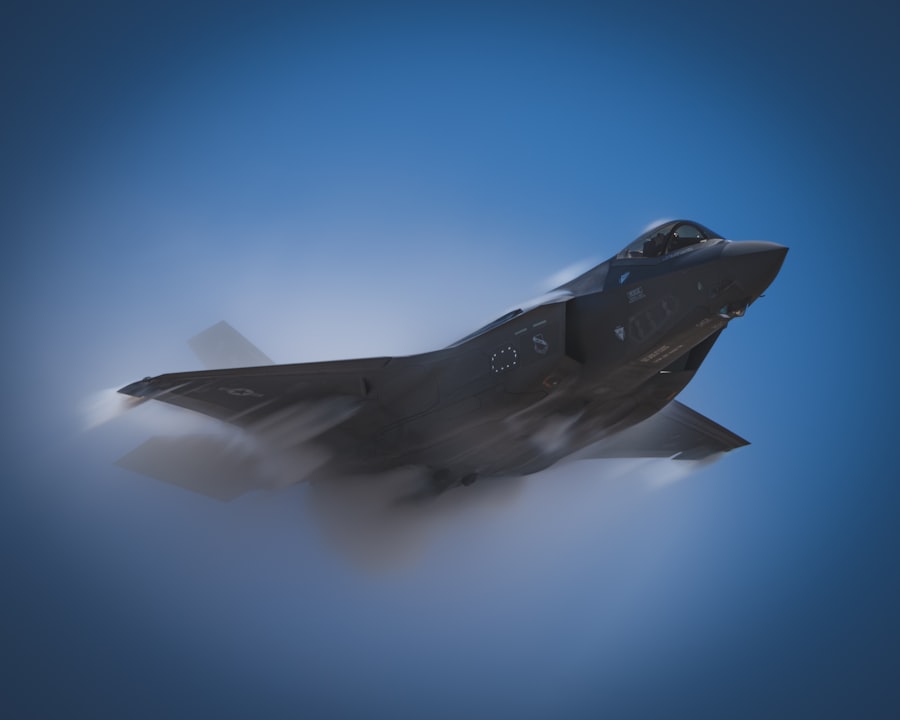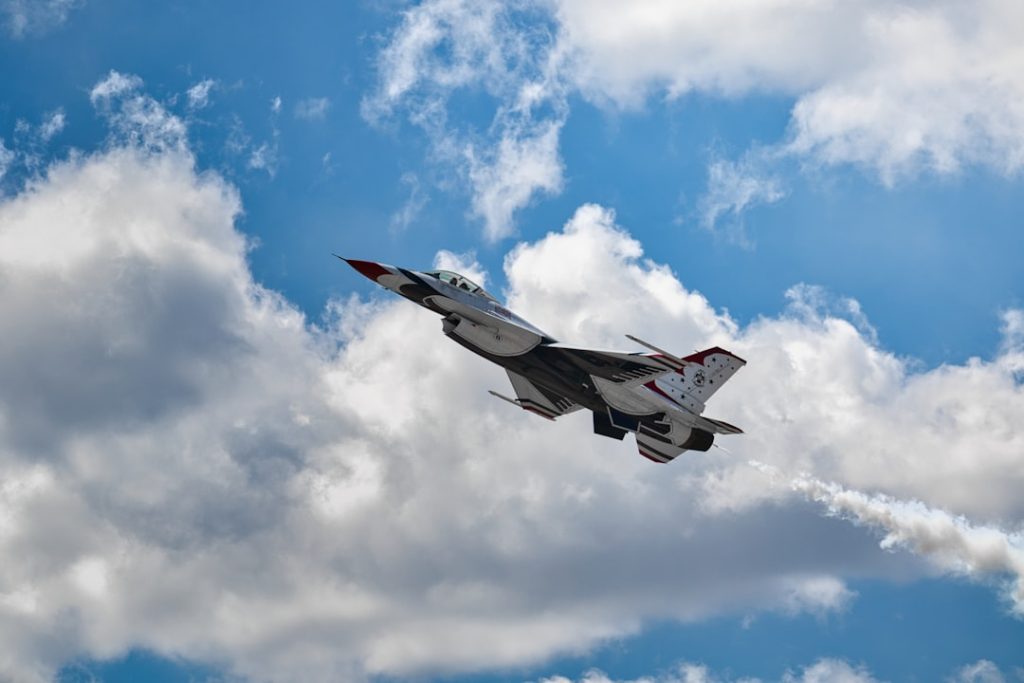The aerospace and defense industry is a multifaceted sector that encompasses the design, development, and production of aircraft, spacecraft, and defense systems. This industry plays a crucial role in national security, economic stability, and technological advancement. It includes a wide range of activities, from manufacturing commercial airliners and military jets to developing satellite systems and missile defense technologies.
The industry’s significance is underscored by its contributions to job creation, innovation, and global trade, making it a vital component of many economies around the world. Historically, the aerospace and defense sector has been characterized by its high barriers to entry, substantial capital requirements, and rigorous regulatory standards. Companies operating in this space often engage in long-term contracts with governments and military organizations, which can lead to stable revenue streams but also necessitate a deep understanding of complex procurement processes.
The interplay between commercial aviation and defense spending further complicates the landscape, as fluctuations in one area can significantly impact the other. As we delve into the current state of the industry, it is essential to consider the various factors shaping its trajectory.
Key Takeaways
- The aerospace & defense industry is a critical sector that encompasses the development and production of military and civilian aircraft, weapons systems, and space technologies.
- Global market trends for 2022 indicate an increasing demand for defense capabilities, space exploration, and commercial aviation, driven by geopolitical tensions and technological advancements.
- Geopolitical events such as conflicts, trade disputes, and international alliances have a significant impact on the aerospace & defense industry, influencing market dynamics and supply chain operations.
- Emerging technologies such as artificial intelligence, unmanned aerial vehicles, and advanced materials are driving innovation in the aerospace & defense sector, offering new capabilities and efficiencies.
- Sustainable practices and environmental considerations are becoming increasingly important for aerospace & defense companies, with a focus on reducing carbon emissions and minimizing environmental impact.
Global Market Trends and Forecasts for 2022
As of 2022, the aerospace and defense industry is experiencing a dynamic shift influenced by several global market trends. One of the most notable trends is the increasing demand for advanced military capabilities driven by rising geopolitical tensions. Countries are investing heavily in modernizing their armed forces, leading to a surge in defense spending.
According to various market analyses, global defense expenditures are projected to grow steadily, with significant investments in areas such as cyber warfare, unmanned systems, and advanced missile technologies. In parallel, the commercial aviation sector is rebounding from the impacts of the COVID-19 pandemic. With travel restrictions easing and consumer confidence returning, airlines are beginning to expand their fleets and enhance their operational capabilities.
This resurgence is expected to drive demand for new aircraft, particularly those that are more fuel-efficient and environmentally friendly. Analysts predict that the commercial aerospace market will see a compound annual growth rate (CAGR) of around 4% over the next several years, reflecting a robust recovery trajectory.
Impact of Geopolitical Events on the Industry

Geopolitical events have a profound impact on the aerospace and defense industry, often dictating shifts in spending priorities and strategic focus. For instance, tensions between major powers such as the United States, China, and Russia have led to an arms race characterized by increased military spending and technological advancements. The ongoing conflict in Eastern Europe has also prompted NATO countries to bolster their defense capabilities, resulting in heightened demand for advanced military equipment and systems.
Moreover, geopolitical instability can disrupt supply chains and affect international collaborations within the industry. For example, sanctions imposed on certain countries can limit access to critical technologies or materials needed for defense manufacturing. This has led companies to seek alternative suppliers or invest in domestic production capabilities to mitigate risks associated with geopolitical uncertainties.
The ability to adapt to these changing dynamics is crucial for companies aiming to maintain their competitive edge in a rapidly evolving landscape.
Emerging Technologies and Innovations in Aerospace & Defense
| Technology | Application | Impact |
|---|---|---|
| Artificial Intelligence | Autonomous systems, predictive maintenance | Improved efficiency, reduced human error |
| 3D Printing | Rapid prototyping, lightweight components | Cost savings, faster production |
| Virtual Reality | Training simulations, design visualization | Enhanced training, improved design process |
| Internet of Things (IoT) | Asset tracking, condition monitoring | Real-time data, proactive maintenance |
The aerospace and defense industry is at the forefront of technological innovation, with emerging technologies reshaping how companies design and manufacture products. One of the most significant advancements is the integration of artificial intelligence (AI) and machine learning into various applications. These technologies are being utilized for predictive maintenance, enhancing operational efficiency, and improving decision-making processes in both military and commercial contexts.
Additionally, advancements in materials science are leading to the development of lighter and stronger materials that can withstand extreme conditions. For instance, composite materials are increasingly being used in aircraft construction to reduce weight while maintaining structural integrity. This not only enhances fuel efficiency but also contributes to overall performance improvements.
Furthermore, innovations in propulsion systems, such as electric and hybrid engines, are gaining traction as companies seek to reduce their environmental footprint while meeting regulatory requirements.
Sustainable Practices and Environmental Considerations in the Industry
Sustainability has become a central theme within the aerospace and defense industry as stakeholders recognize the importance of minimizing environmental impact. The sector is under increasing pressure from governments, consumers, and advocacy groups to adopt greener practices throughout the supply chain. This includes efforts to reduce greenhouse gas emissions from aircraft operations as well as implementing sustainable manufacturing processes.
One notable initiative is the development of sustainable aviation fuels (SAFs), which aim to significantly lower carbon emissions compared to traditional jet fuels. Major airlines and manufacturers are collaborating with biofuel producers to create viable alternatives that can be integrated into existing infrastructure. Additionally, companies are exploring electric propulsion systems for short-haul flights as a means of reducing reliance on fossil fuels.
These efforts not only align with global sustainability goals but also present opportunities for innovation and differentiation in a competitive market.
Key Challenges and Opportunities for Aerospace & Defense Companies

While the aerospace and defense industry presents numerous opportunities for growth and innovation, it is not without its challenges. One of the primary hurdles facing companies is navigating complex regulatory environments that vary significantly across different regions. Compliance with stringent safety standards and export controls can be resource-intensive and may hinder agility in responding to market demands.
Moreover, workforce shortages pose a significant challenge as experienced professionals retire or transition out of the industry. The need for skilled labor in areas such as engineering, manufacturing, and cybersecurity is becoming increasingly critical as companies strive to keep pace with technological advancements. To address this issue, many organizations are investing in training programs and partnerships with educational institutions to cultivate a new generation of talent.
Conversely, these challenges also present opportunities for companies willing to adapt and innovate. The push for modernization within defense forces creates openings for firms that can provide cutting-edge solutions tailored to evolving threats. Additionally, collaboration between private companies and government entities can lead to joint ventures that leverage shared resources and expertise.
Regulatory and Policy Changes Affecting the Industry
Regulatory frameworks play a pivotal role in shaping the aerospace and defense industry, influencing everything from product development timelines to market access strategies. In recent years, there has been a notable shift towards more stringent regulations aimed at enhancing safety standards and ensuring compliance with international agreements. For instance, changes in export control laws can impact how companies engage with foreign markets, necessitating a thorough understanding of compliance requirements.
Furthermore, government policies related to defense spending can significantly affect market dynamics. In many countries, budgetary constraints have led to increased scrutiny of defense contracts and procurement processes. Companies must navigate these complexities while positioning themselves as reliable partners capable of delivering value within constrained budgets.
Engaging proactively with policymakers can help firms anticipate changes in regulations and align their strategies accordingly.
Strategies for Success in the 2022 Aerospace & Defense Industry
To thrive in the competitive landscape of the aerospace and defense industry in 2022, companies must adopt multifaceted strategies that address both current challenges and future opportunities. Emphasizing innovation through research and development will be crucial for staying ahead of technological advancements while meeting evolving customer needs. Collaborating with academic institutions and research organizations can foster an environment conducive to breakthrough innovations.
Additionally, companies should prioritize sustainability initiatives not only as a response to regulatory pressures but also as a means of enhancing brand reputation among environmentally conscious consumers. By investing in sustainable practices throughout their operations, firms can differentiate themselves in a crowded marketplace. Finally, building strong relationships with government entities will be essential for navigating regulatory complexities and securing lucrative contracts.
Engaging in dialogue with policymakers can provide valuable insights into emerging trends while positioning companies as trusted partners committed to national security objectives. In summary, success in the aerospace and defense industry requires a proactive approach that embraces change while leveraging opportunities for growth through innovation, sustainability, and strategic partnerships.


